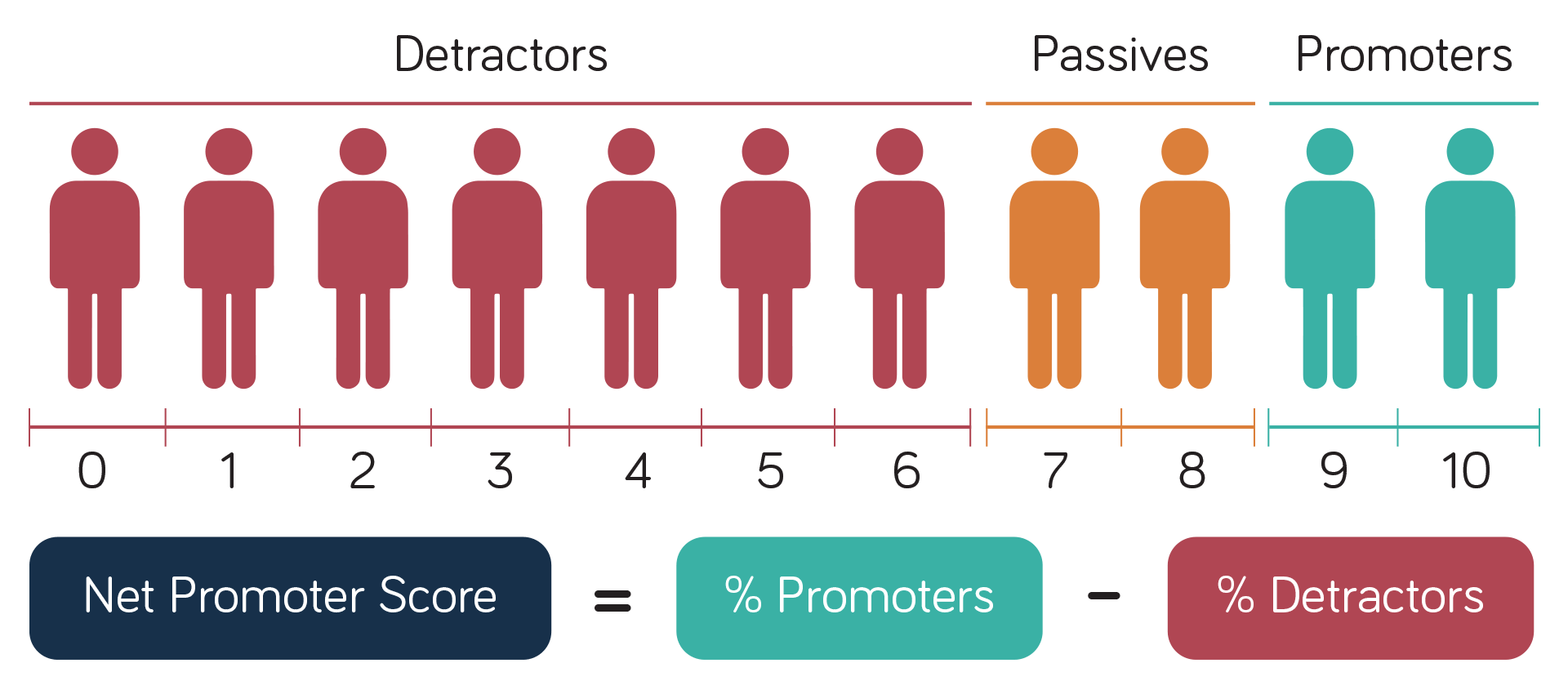- Home
- Resources
- Blog
- Home
- Business General
- Why NPS scores matter in the telecoms industry
Why NPS scores matter in the telecoms industry
Net Promoter Scores (NPS) measure customer satisfaction with a product or company – a crucial metric that helps you choose the best service and shows providers what to improve
- Neos Networks
- Business General ,

- What is a Net Promoter Score (NPS)?
- How NPS scores work
- Types of NPS
- Why NPS are important in the telecoms sector
- What NPS mean for Neos Networks
What is a Net Promoter Score (NPS)?
A Net Protomer Score (NPS) is a metric used to measure customer satisfaction with a company, product or service. It’s calculated using a standard method, so it’s a great way to compare customer views of different companies or products across an industry.
How NPS scores work
NPS scores work by asking a single question to measure customer satisfaction and calculating a figure based on how customers respond. Here’s how it works in detail.
NPS question
The customers surveyed are asked this question: ‘On a scale of 0 to 10, how likely are you to recommend our company/product/service to a friend or colleague?’. Zero is ‘not at all likely’, and ten is ‘extremely likely’.
NPS categories
Customers are placed in one of three categories based on how they answer the question above:
- Detractors (scoring 0-6): dissatisfied customers who may discourage others from using the company, product or service
- Passives (scoring 7-8): customers that are satisfied but not keen enough to actively promote the company
- Promoters (scoring 9-10): very satisfied and loyal customers who are likely to promote the company
NPS calculation
To calculate the NPS, you subtract the percentage of detractors from the percentage of promoters.
How to calculate an NPS

For example, imagine 50 customers have responded to your company’s survey with the following results: 36 are promoters, 11 are passives and 3 are detractors:
- Percentage of Promoters: 36/50 x 100 = 72%
- Percentage of Detractors: 3/50 x 100 = 6%
- Your NPS score is 72 – 6 = +66
Scores can vary from –100 to +100, so how do you know what’s a good score?
NPS interpretation
If every customer who responds is a detractor, the score will be –100. Conversely, if every respondent is a promoter, it will be +100.
So any positive score (greater than zero) indicates generally favourable customer sentiment. A score of +40 or more is usually considered very good or excellent, depending on the industry.
Types of NPS
There are various types of Net Promoter Scores covering a range of customer sentiment, from feelings about a particular product or brand to satisfaction with service delivery over time.
In the telecoms sector, two NPS are crucial:
- Transactional NPS show customer satisfaction after a specific interaction with a company, such as a customer service call, purchase or product delivery.
- Relationship NPS measure the overall relationship with customers and their loyalty over a longer period.
Together, these two scores give you a complete picture of customers’ experience, from purchase and delivery to ongoing maintenance and customer support.
Why NPS are important in the telecoms sector
When it comes to measuring customer satisfaction, telecoms providers often attract low approval ratings. Service delivery is notoriously challenging, with some of the largest companies often earning surprisingly low scores.
That’s why NPS are such a vital indicator in telecoms – a customer satisfaction metric that’s recognised and trusted worldwide.
First, when selecting a provider or connectivity partner, they allow you to look beyond the marketing and identify companies that truly deliver on their promises.
Second, they’re a great way for providers to gather customer feedback. By regularly monitoring our scores, we can see how new changes, products or services directly influence customer satisfaction.
What NPS mean for Neos Networks
At Neos Networks, customer service is our priority. We believe happy customers are loyal customers, and gathering your feedback is vital to understand whether you’re happy with our services.
We ask our customers to rate their experience with us regularly, covering areas like account management, service support and delivery (relationship NPS). We also survey them on the purchase and rollout of a product or service upon delivery (transactional NPS).
By tracking these two scores, we can monitor our performance with our customers and against our competition.
In addition to NPS, customers can respond to a qualitative question, which gives us valuable extra details. In a world where data demands are evolving fast, this helps us evaluate your business’s changing requirements.
Industry-leading NPS
As you can see from our scores, we’re making connectivity work for our customers:
- Our relationship NPS in 2023-24 was +42, far exceeding the benchmark of around +30 for a B2B telecoms company (as recorded by CustomerGauge).
- Our transactional NPS averages around +68, again way above the industry standard.
While market-leading scores mean an excellent reputation, what sets us apart from other providers is how we use your feedback.
For long-term customer satisfaction
At Neos, we take our NPS tracking very seriously and do all we can to translate your feedback into action. Our aim is to always deliver the best possible services and customer experience.
For example, one important early learning for us was that our customers would like more regular updates on orders in progress. Now, our provisioning team provides more information at various touchpoints during every order.
Above all, we pride ourselves on commitment-based management. In other words, we do what we say we’re going to do when we say we’re going to do it.
That’s how we’re making connectivity work for businesses and organisations across the UK. If you want to discuss high capacity connectivity for your business or give feedback on our products or services, contact us.
For us, NPS is more than just a score. The feedback you provide shapes the way we work.
RELATED PRODUCTS
You might also like
-
Article
Wholesale connectivity partnerships: why collaboration is the key to growth
- Business General
We can connect you anywhere in the UK
Discover our network reach
Great news!
"[poscode]" can be reached with our
expanded network
Speak to a representatitive to discuss your options
Contact usLearn about our prices using our online tool, LIVEQUOTE
View LIVEQUOTESorry
"[poscode]" can not be reached with our
expanded network
Speak to a representatitive to discuss your options
Contact usLearn about our prices using our online tool, LIVEQUOTE
View LIVEQUOTE



